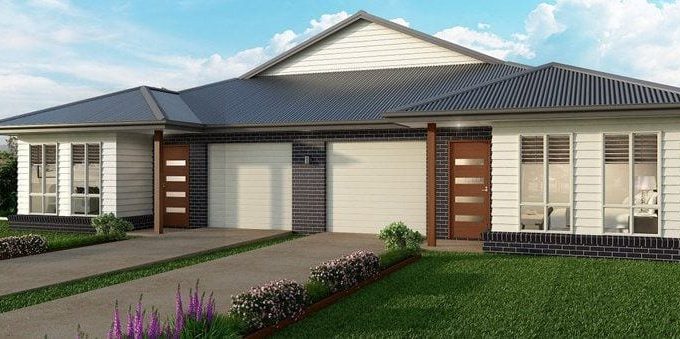For the adept poker player, no two hands are ever played the same way. A…
NSW: 2016 Property Investment Year in Review
Respected independent property valuation and advisory group Herron Todd White has published their “Year in Review” commentary on the residential property market.
Here’s what they have to say about New South Wales:
Overview
2016 continued to illustrate how diverse our nation’s residential sector is. From our global cities and they’re seemingly unstoppable growth to many regionals looking for their price bottom, Australian residential property has run the full gamut of possibilities.
This month, we not only take a look back at the year that was, our team also analyse their market predictions from February to see how they fared.
Sydney
After a sustained period of strong growth, the final quarter of 2015 saw a softening residential market across many parts of Sydney and it was widely expected that this trend would continue into 2016. Despite those expectations, the market continued to see price growth throughout 2016, with double digit growth in a number of suburbs for both houses and units.
Auction clearance rates have recovered since the beginning of the year and are now consistently above 70% and 80%. Some areas such as the inner west and eastern suburbs have had clearance rates regularly above 90%. A major reason behind the increase in clearance rates and sale prices has been the reduced number of properties on the market and majority of properties going to auction rather than private treaty. The usual boom in the number of transactions taking place in spring has failed to live up to past experience. According to CoreLogic the month of November saw auction volumes starting to ease as we approach the holiday season. Sydney has 948 auctions scheduled for the third week of November compared to 1,063 in the second week of November. In 2015 the last week of November saw 1,372 auctions in Sydney. The decrease in auctions from 2015 has been mainly due to lack of stock coming onto the market. Agents have been unable to obtain the same amount of stock compared to 2015. This has caused congestion amongst competing buyers and agents are taking advantage of this. We have seen properties advertised with a price guide only to see prices jump further as they get closer to auction. Sometimes these properties are sold prior to auction for unjustifiable prices.
Mosman in Sydney was the busiest suburb for auctions. In the second week of November, 26 properties were scheduled to be auctioned. The data from a 2015 CoreLogic report indicates that in the week ending 28 November 2015, Mosman was also the busiest suburb in Sydney for auctions with 20 properties scheduled. This trend continued and we have seen an increase in the number of Herron Todd White valuations ordered by lenders in Mosman for the month of November, particularly in the prestige market.
Australian Economy Extract
The minutes of the Reserve Bank of Australia meeting on 1 November indicate that the Australian economy is still going through a transition from mining sector to non-mining sector. The RBA is struggling to gauge the implications of this and the uncertain job market. Low interest rates have seen an acceleration in housing, growth in construction activity and government infrastructure projects which have resulted in the continuation of the strong property market in Sydney.
Sydney
Unit supply The Reserve Bank of Australia also noted that over the next few years a considerable amount of apartments will hit the market in particular capital cities. Growth in rents in the September quarter was slowest for some decades as a result of this new apartment stock coming onto the market. The value of units in the Sydney metropolitan area since the start of the growth phase in June 2012 has increased significantly when compared to other capital cities however is still below the increase in housing values for the same period (Graph- Change in house & unit values). This increase in housing costs has meant that units are an affordable option for the majority of buyers – owner occupiers and investors alike, especially in key locations with accessibility to infrastructure a major driver.
Although units are more affordable, the Sydney median unit price is $675,000 (see graph below of median selling price of houses over units) which is more expensive than the median Melbourne house price at $641,500.
A report published by Urbis titled Sydney Apartment Essential Report indicates that the average sale price of off-the plan units was $1.150 million which is considerably higher than the median unit price. We have seen these large contract figures for off-the plan valuations prior to the recent decision by the Australian Property Institute to abolish off-the-plan valuations. The more notable areas are Mascot, Zetland and Waterloo which have been attractive because of their close proximity to the CBD and the amenities required for modern living incorporated in these developments. These developments are very popular with overseas investors.
Herron Todd White also noted a decline in off-the-plan valuations prior to their abolishment due to the Australian Prudential Regulation Authority’s tighter lending regulations for banks. Many of these lenders have black listed suburbs such as Waterloo, Zetland, Botany, Homebush, Sydney Olympic Park, Greater Parramatta and Auburn. These suburbs are considered high risk lending due to the large supply of these apartments and the unjustifiable prices.
Buyers should take the same cautions as lenders for these suburbs as Corelogic reports that the construction boom is yet to slow with 16,194 apartments under construction in New South Wales. The graph below indicates that if everything that has been approved is built over the next 24 months there will potentially be a big uplift in stock.
The big uplift in stock levels will come from the inner-city locations as well as regions further afield which have benefited from transport infrastructure projects. The potential risks in Sydney should not be discounted. Corelogic reports that Strathfield, Burwood and Ashfield will potentially see a 20.7% increase in apartment stock, Parramatta apartment stock could increase 19.2% and Auburn could see stock increase by 26.1%. Many of these apartments are marketed to overseas investors and with the tighter lending criteria there is an oversupply risk in some areas. Furthermore, the risk of oversupply is likely to be vastly different across product types, target markets and based on the quality of the development, location of the site and the reputation of the developer.



